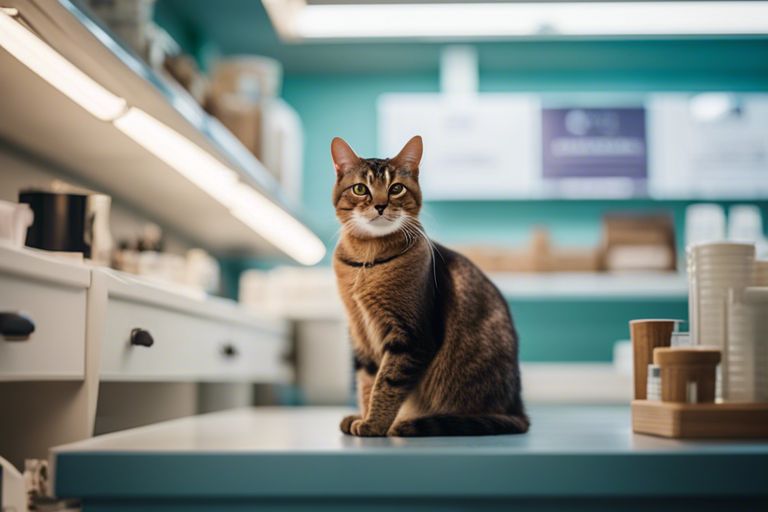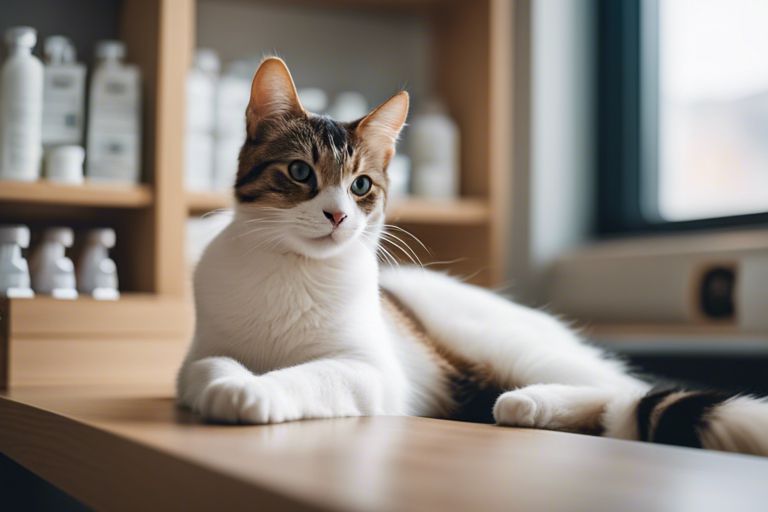As a responsible pet owner, you understand the importance of regular vet visits for your feline companion. However, these visits can be extremely stressful for your cat, leading to anxiety and fear. In order to ensure the safety and well-being of your pet, it is crucial to take steps to minimize the stress associated with vet visits. From creating a positive association with the carrier to using calming pheromones, there are several strategies that you can implement to make vet visits less traumatic for your cat. In this informative blog post, we will provide practical tips and techniques to help you reduce your cat’s stress levels during vet visits, ultimately making the experience more pleasant for both you and your feline companion.
Preparing for the Vet Visit
Your cat’s trip to the vet can be a stressful experience, but proper preparation can help minimize anxiety for both you and your feline friend. By taking a few simple steps before the appointment, you can help ensure a smoother and less stressful visit for your cat.
Familiarizing Your Cat with the Carrier
It’s important to make the carrier a familiar and comfortable space for your cat. Leave the carrier out in a common area of your home with the door open so your cat can explore and become accustomed to it. You can also place treats, toys, or a soft blanket inside to make the carrier more inviting. By allowing your cat to become familiar with the carrier in a positive way, you can reduce the stress of being placed inside it for the vet visit.
Calming Techniques Before the Appointment
Before the vet visit, it’s important to help your cat remain as calm as possible. If your cat is anxious or prone to stress during car rides, you can use calming techniques such as pheromone sprays or calming treats to help relax them. Additionally, spending some extra time playing with and comforting your cat before the appointment can help reduce their stress levels and make the trip to the vet more manageable.
During the Vet Visit
Obviously, the vet visit can be a stressful experience for your cat. From the car ride to the unfamiliar smells and sounds at the veterinary clinic, there are many factors that can make your cat feel anxious. However, there are steps you can take to help make the visit as comfortable as possible for your feline friend.
Helping Your Cat Stay Calm
One way to help your cat stay calm during the vet visit is to use a pheromone spray or diffuser in the carrier and waiting room. These products mimic the natural calming pheromones that cats release, and can help reduce anxiety in unfamiliar environments. Additionally, you can bring along your cat’s favorite blanket or toy to provide a sense of familiarity and comfort. When in the exam room, place your cat on a non-slip surface, such as a towel, to help them feel more secure. Finally, remain calm and reassuring during the visit, as your cat will pick up on your emotions.
Communication with Veterinary Staff
It’s important to communicate with the veterinary staff about your cat’s anxiety and any specific triggers they may have. This will help the vet and technicians understand your cat’s needs and handle them accordingly. You can also ask if the clinic has a separate waiting area for cats or if there are specific appointment times for anxious pets. Be sure to discuss any concerns or questions you have about the visit with the staff before, during, and after the examination.
Post-Vet Visit Care
Unlike humans, cats may need time to recover from their vet visits. It’s important to monitor your cat’s behavior and provide a calm and relaxing environment to reduce post-visit anxiety.
Monitoring Your Cat’s Behavior
After returning from the vet, it’s essential to keep an eye on your cat’s behavior. Watch out for any unusual signs such as lethargy, loss of appetite, or excessive hiding. If you notice any of these symptoms, it’s crucial to contact your vet immediately. Keep an eye on your cat, and if you notice any concerning changes, consult your vet right away.
Reducing Post-Visit Anxiety
After a visit to the vet, your cat may be experiencing heightened anxiety. Provide a safe and quiet space for your cat to rest and recuperate. Make sure the environment is peaceful and free from any potential stressors. Engage in gentle play and provide your cat with their favorite toys to help them relax. If your cat is displaying signs of anxiety, consult your vet for advice on how to alleviate their stress.
Building a Positive Vet Visit Experience
Keep in mind that creating a positive vet visit experience for your cat can go a long way in reducing their stress and anxiety. By taking the time to build positive associations and choosing the right veterinary clinic, you can help make vet visits less stressful for your feline friend.
Creating Positive Associations
Creating positive associations with the carrier and car rides can help make vet visits less stressful for your cat. Start by leaving the carrier out in your home with the door open so that your cat can explore it on their own terms. You can also place treats, toys, or a comfortable blanket inside the carrier to make it a more inviting space for your cat. Additionally, you can take your cat on short car rides to places they enjoy, such as a park or a friend’s house, to help them associate car rides with positive experiences.
Choosing the Right Veterinary Clinic
When it comes to choosing the right veterinary clinic for your cat, there are several factors to consider. Look for a clinic that is cat-friendly, with separate waiting areas or appointment times for cats to reduce stress from other animals. Additionally, make sure the clinic has experienced and gentle staff who are skilled in handling and caring for cats. A clinic that offers low-stress handling techniques and feline-friendly amenities, such as pheromone diffusers and cozy blankets, can also contribute to a positive vet visit experience for your cat.

How can I make vet visits less stressful for my cat?
Ultimately, making vet visits less stressful for your cat requires a combination of preparation, patience, and consistency. This includes implementing regular carrier training, using pheromone products to calm your cat, and desensitizing them to the various aspects of the vet visit, such as handling and examination. Additionally, choosing a feline-friendly practice and communicating with your veterinarian about your cat’s anxiety can also help to create a more positive experience. By taking proactive steps and addressing your cat’s stress, you can make vet visits a less daunting experience for both you and your feline companion.














